All products featured are independently chosen by us. However, SoundGuys may receive a commission on orders placed through its retail links. See our ethics statement.
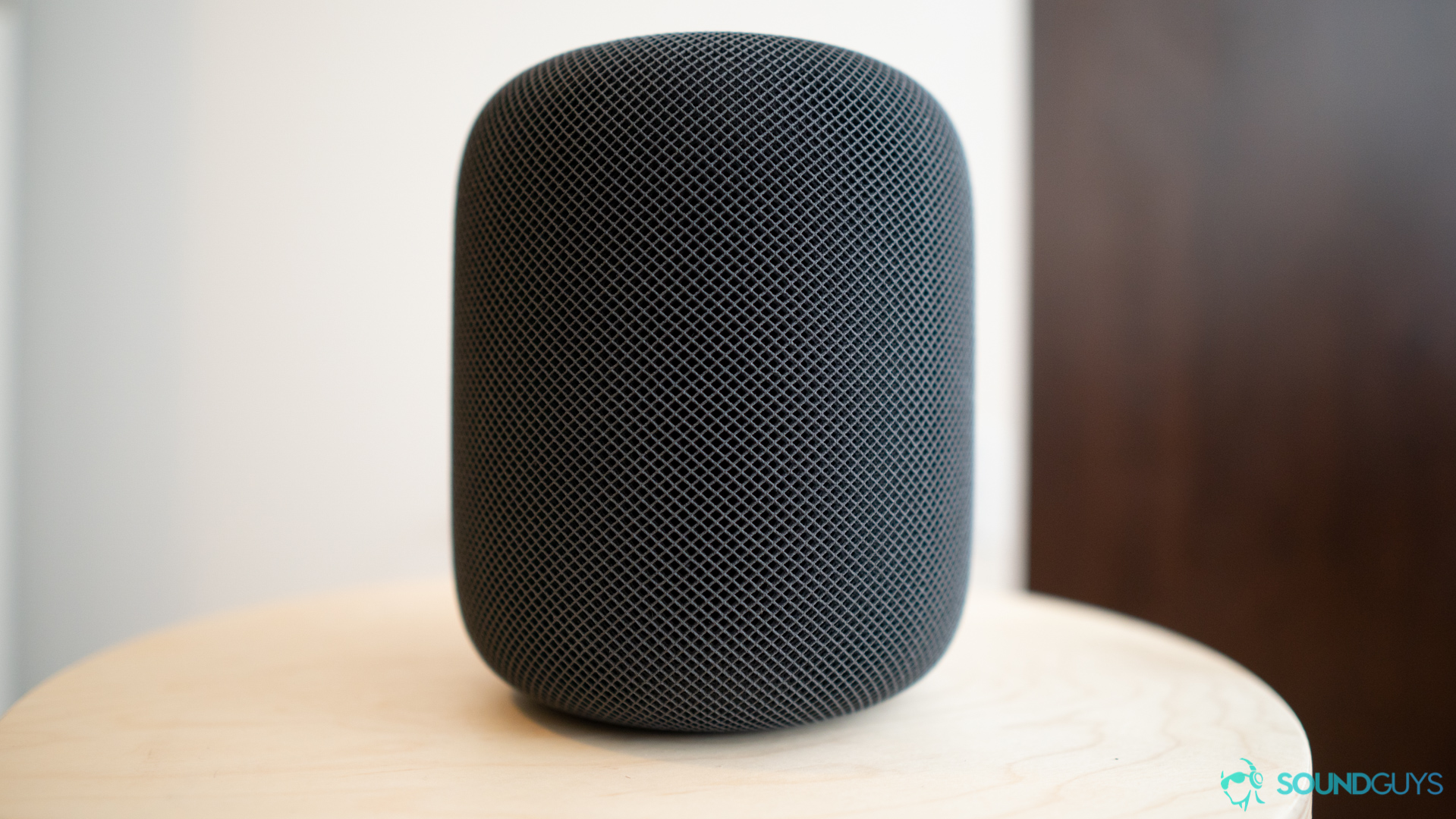
Apple HomePod review
June 28, 2021
Apple Homepod
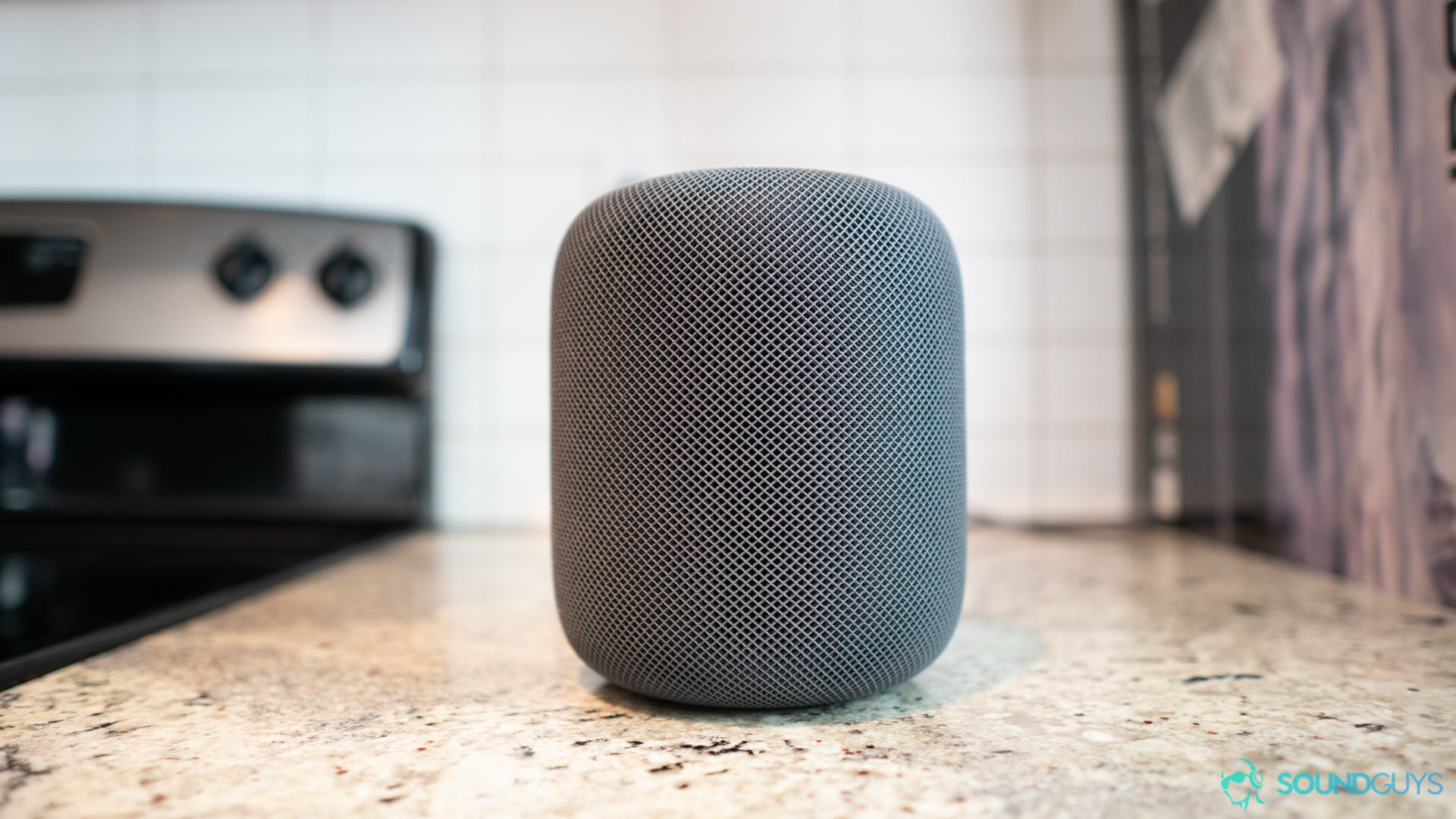
One of the more exciting new categories in audio comes in the form of smart speakers. After the surprise hit that was the Amazon Echo it seemed that every company was trying to put a speaker in your home, but they didn’t always sound good. The original Google Home was like the Echo in that it wasn’t exactly built for listening to music, it was made to be the central hub of your smart home (assuming you installed smart door locks, thermostats, and light bulbs in your house). But now we’re seeing the transition from helpful kitchen assistant to the center of attention when you listen to music. We already looked at the Google Home Max, but there is also the Apple HomePod to consider. Unlike the Home Max, the Apple HomePod is pretty small and has a few significant limitations. But does that even matter? Let’s find out in our full Apple HomePod review.
Editor’s note: this post was updated on June 28, 2021, to address a FAQ regarding support for the discontinued Apple HomePod.
Who’s it for
- Someone who owns Apple hardware (iPhone, iPad, Mac). Actually, this part is mandatory. It’s usually easier to get the most out of an Apple product if you already have another Apple product. Just look at Airdrop as an example. But in the case of the Apple HomePod, having another Apple device is basically mandatory. Without a Mac, iPhone, or iPad, the HomePod can’t be used.
- Apple Music subscribers. If you’re an Apple Music subscriber, this speaker is perfect for you. You can ask Siri to play everything from that new Miley Cyrus song to jock jams and it’ll oblige seamlessly.
- Anyone that doesn’t want Google tracking them. If you’re not too happy about the fact that Google has a record of everything you ask the Google Home, then the added privacy of the Apple HomePod might just be the deciding factor for you. Of course, it’s only a little better. They’re still recording you, but your inquiries are assigned a random ID instead of being associated with your account. Also, the legal implications of having something in your home that’s always listening are still being debated. We spoke about this topic extensively in our podcast episode titled, “Smart Speakers, A New Legal Frontier” so make sure to give that a listen if you’re interested in learning more about the subject.
How do you connect to the Apple HomePod?
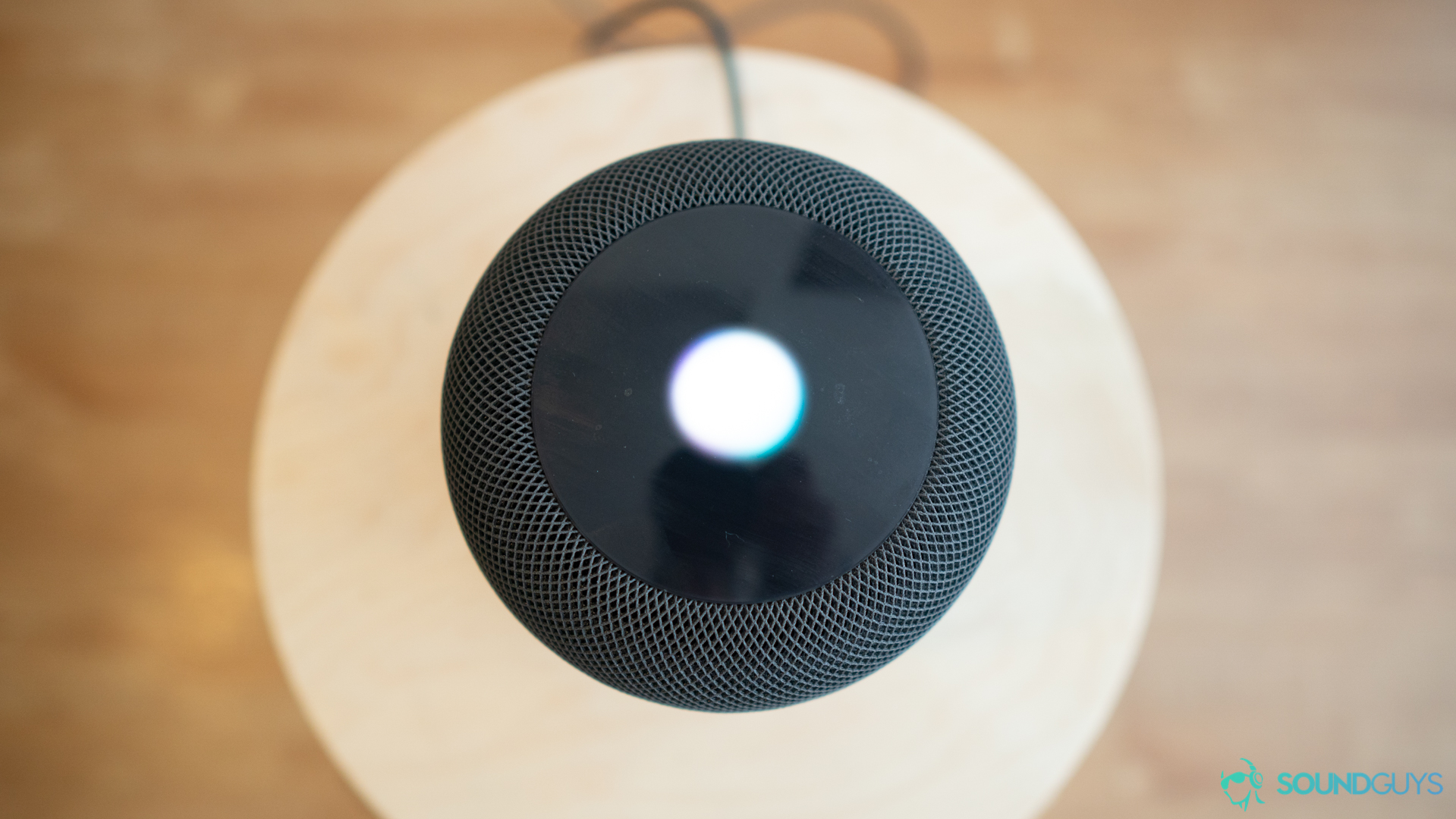
The Apple HomePod is a smart speaker, which means you have to connect it to your WiFi if you want it to work. Once you plug it in you’ll need a device running iOS 8 or higher in order to set it up. Go into the Home app on your phone and simply follow the instructions to get it up and running. If you’re doing this on an iPhone or iPad, the process is seamless and you’ll be done within minutes. But if you’re an Android user or don’t have any device running iOS 8 or newer: then you’re up a creek without a paddle.
If you’re an Android user or don’t have any device running iOS 8 or newer: then you’re up a creek without a paddle.
Unlike Google’s Home Max which doesn’t really care what phone you have, the Apple HomePod requires another Apple device to get it up and running. (Pro tip: If you manage to get the HomePod set up with an iOS device but want to use an Android phone as your primary source device, you can try this app that will let the HomePod show up in Spotify connect.) Once you sign in you’re good to go—just ask it to play a song and it’ll oblige.
Does the Apple HomePod work with Spotify?
Previously, the HomePod only pulled music from Apple Music service natively but now you can select your default music streaming service by going into the Home app on iOS. An update to iOS 13 allowed Siri to play music via Spotify if you add the words “- from Spotify” to the end of your voice request and now that iOS 14 is out many were hoping that the ability to select a default music player would come to iPhones. Unfortunately, that still hasn’t happened but at least you can choose the service on your HomePod.
Unfortunately, if you want to use other music streaming service like Tidal or Deezer you’ll need to use AirPlay from your device. It’s a little clunky and not as seamless, but at least it’s possible. Asking Siri to do it with your voice will get you nowhere unless you set up a Siri shortcut for it.
Additionally, there’s no 3.5mm input on the device, so you can’t sidestep this by connecting an audio cable. One way around this is to AirPlay audio to the speaker, but again: that’s only if you have an iOS device, as Airplay isn’t available on Android devices. One cool feature of Airplay 2 is the ability to sync up two HomePods and turn them into left and right channels. Unfortunately, we only had one HomePod available so we weren’t able to test this feature out for ourselves.
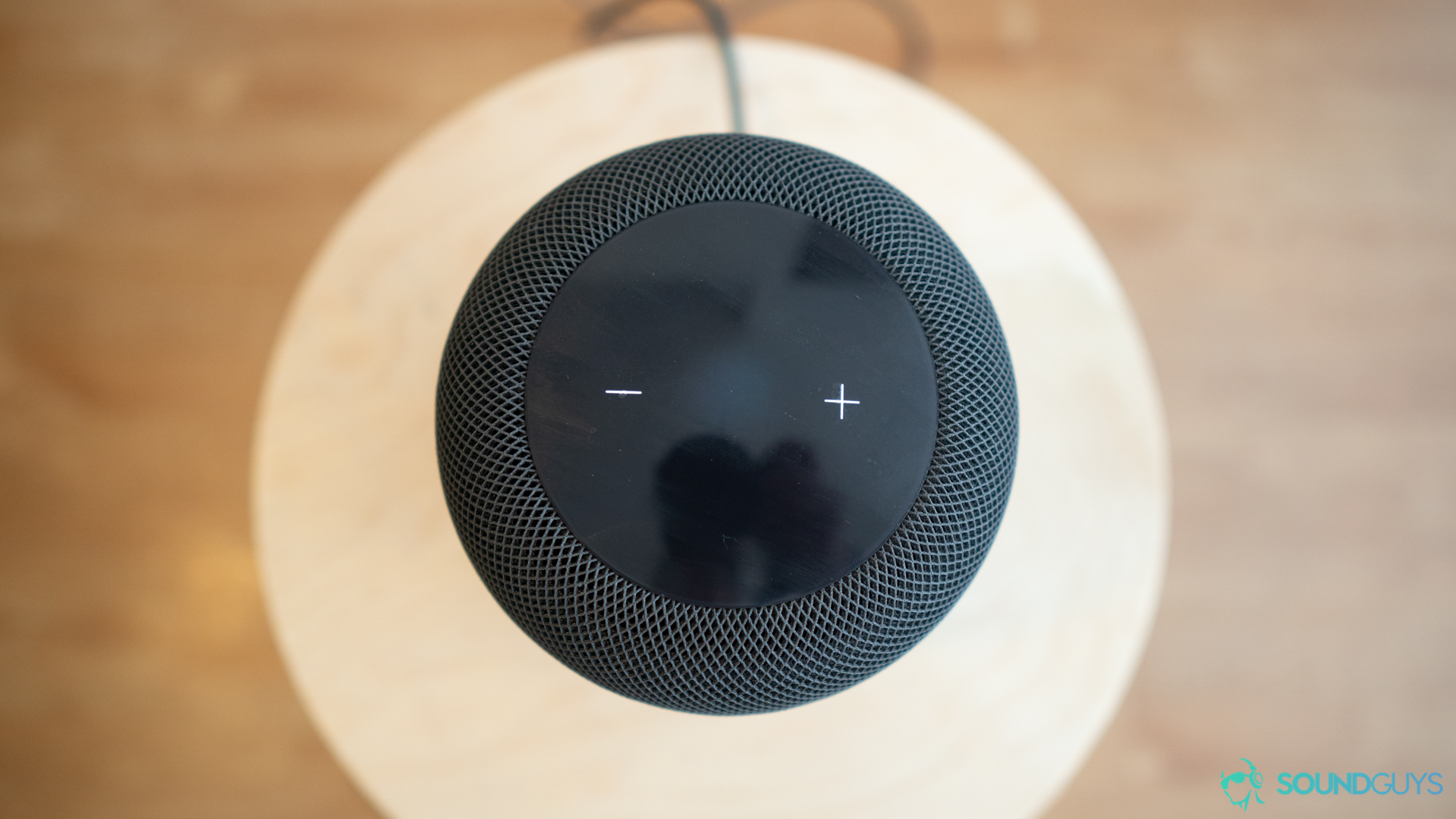
One good thing about the Apple HomePod is the microphones do a great job at picking up your voice, which is important as that’s the main way to control playback if you’re not within arms reach. Whether volume was on ten percent or on 100 percent, it usually picked up my voice on the first or second try of saying the hotword. This is great when you compare it to something like the Google Home Max which had trouble picking up my voice when music was playing loudly even if I was standing close to it. If you don’t feel like using your voice, there is a touch-sensitive pad on top of the speaker which lets you pause or play music by tapping the middle, adjust volume by pressing the minus or plus signs, and even access Siri by long-pressing the middle of the pad.
Where are the HomePod settings?
If you’re looking to adjust the settings of your HomePod then you’ll need to go into the Home app on your iPhone or iPad. Once there you’ll need to locate the HomePod icon and click on it. In the lower right hand corner you’ll see a button that says “Details” that you need to press. From there you’ll be able to access all the settings for the HomePod. You can do things like change the name of the speaker, select a default account, and even allow or disable explicit content to play.
How’s the build and design of the Apple HomePod
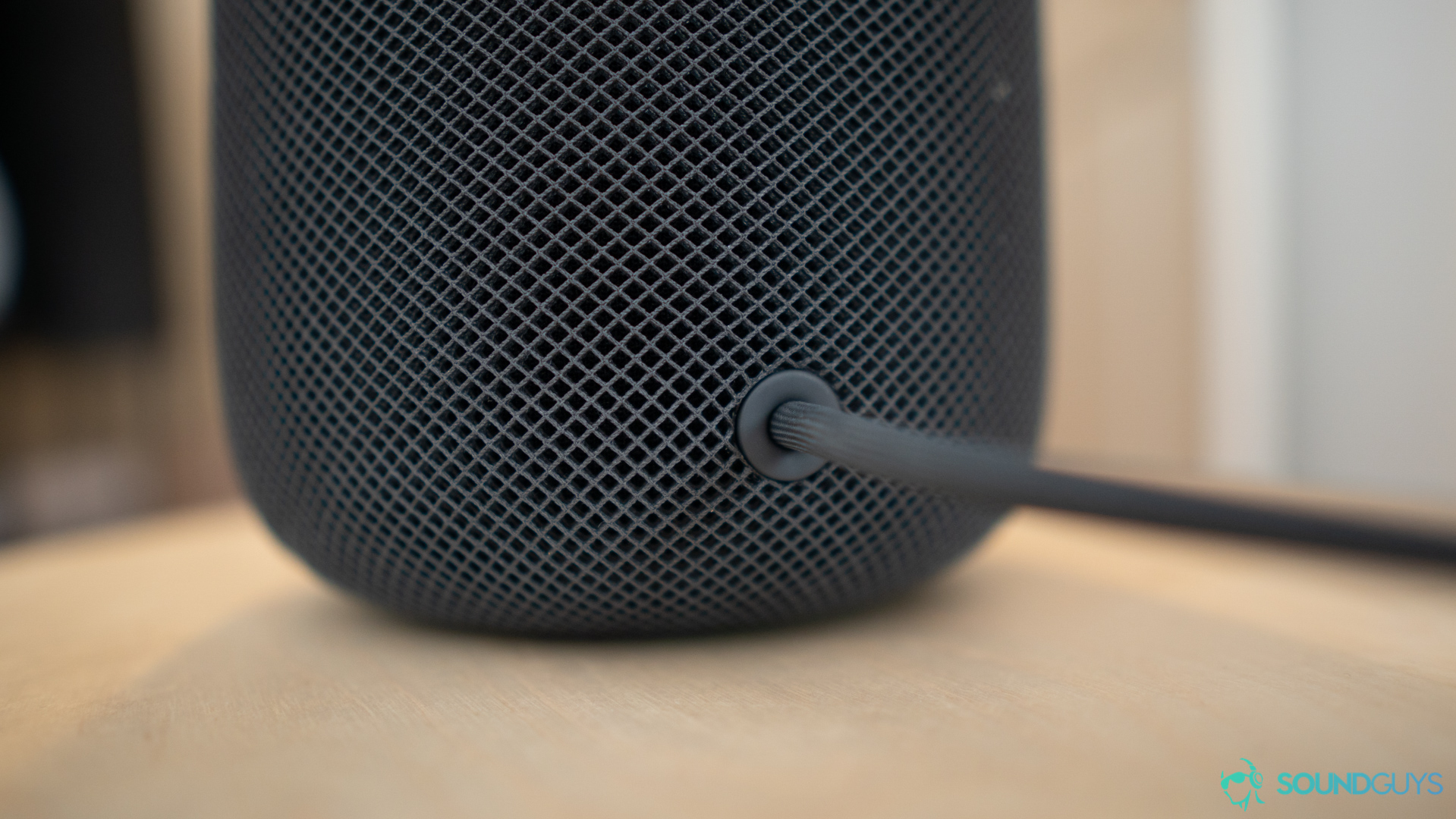
For the most part, the build quality of this speaker is great. It’s covered entirely by a plush fabric that hides most, if not all, of the plastic that the speaker is surely made out of. I have basically nothing negative to say about the way this speaker is put together. And although I do find the minimal design to be absolutely gorgeous when it’s sitting on my counter-top or bedside table, I did find the placement of the touch-sensitive screen on top of the speaker to be more inconvenient than it was helpful. As Gary would say, let me explain.

Every time you say “Hey Siri,” the Siri graphic appears on the touch-sensitive display letting you know that it heard you and is now listening for your next command. It’s useful when you’re standing next to it, but if you’re across the room it’s almost impossible to tell if the speaker heard you. More than once I ended up repeating the hotword at the same time that Siri was answering my question just because I didn’t realize it heard me.
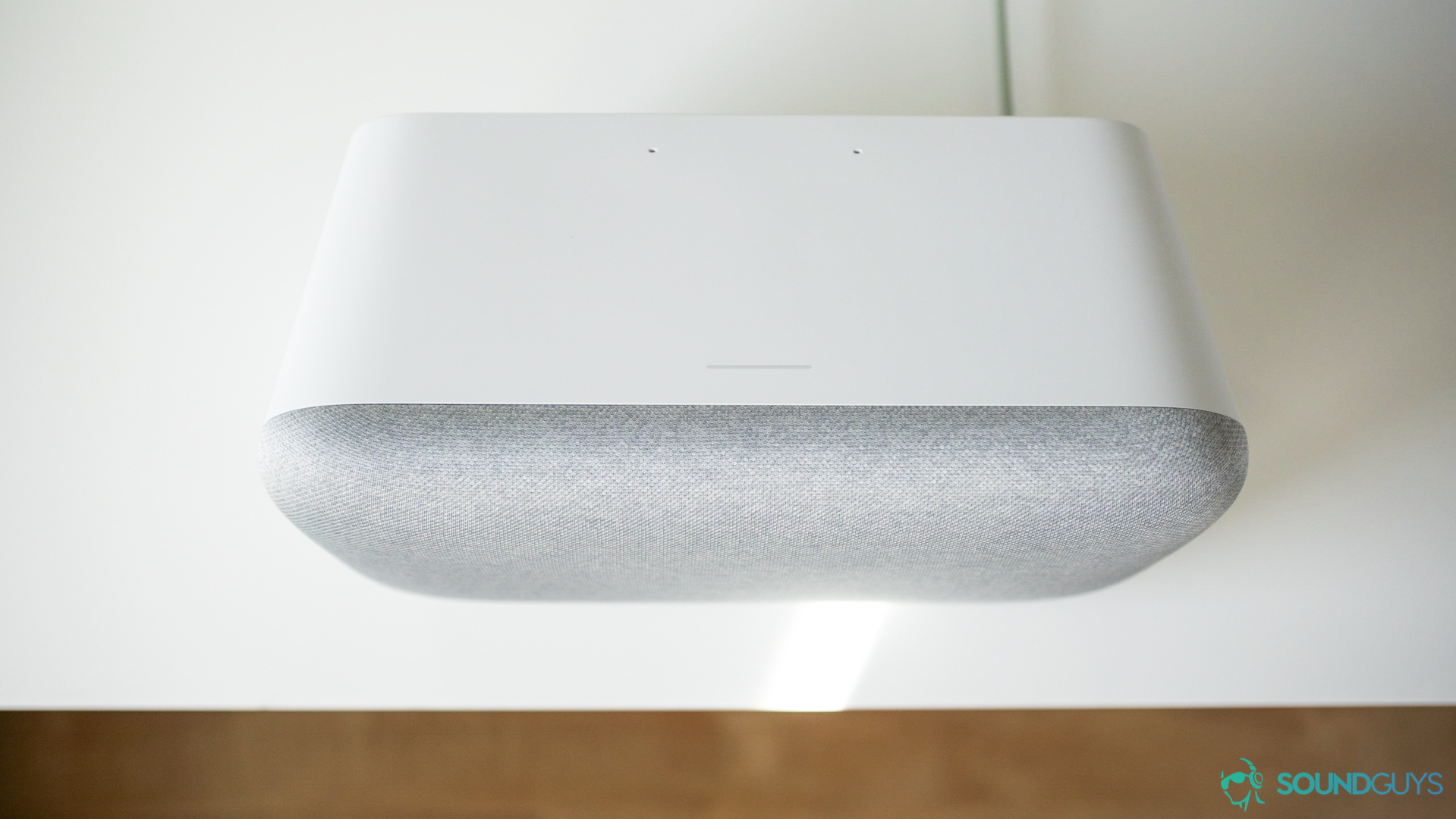
In contrast, the Google Home Max has four lights embedded in the fabric on the front of the speaker that light up to let you know it’s listening. The Amazon Echo does something similar with its ring of light. The Apple HomePod basically asks you to trust that it’s working (which is a good metaphor for Apple products in general actually). To be fair, more often than not the microphone picks up my voice perfectly fine—but a slight visual cue would be nice.
How does the Apple HomePod sound?
When you’re talking about how the HomePod actually sounds things get interesting. Like the Google Home Max, the HomePod also has microphones inside that self-adjust the EQ depending on how close it is to a wall or other objects so that the sound stays relatively constant throughout using it. If you place a speaker near a corner, the low end gets a nice boost from bouncing around. The microphones can hear that this is the case, and then tone down the bass notes to maintain a reliable sound. As was the case with the Google Home Max, I can’t really prove that it’s doing this. But I can say that whether the speaker was in a corner on my counter or in the middle of a room, I couldn’t hear any meaningful differences between the two.
The HomePod's bass response is okay, but won't blow you away.
The Apple HomePod isn’t a large speaker, so its low end isn’t going to be overwhelming like it is with the Google Home Max. It also doesn’t get as loud as the Google Home Max, but both of these traits work to its advantage. There’s still a strong enough bass where it’s easy enough to follow the bassline all throughout the song Let It Happen by Tame Impala, but it isn’t strong enough that it gets in the way of any of the vocals or other instruments in the lower mids. Bass kicks easily pulse along underneath the synths and keeps the rhythm easily felt, but it definitely isn’t as powerful as something like the Google Home Max.
Not to make it seem like the Home Max is a bass-hungry monster, but the HomePod definitely seems like it’s holding back at times in order to put equal emphasis on other elements besides just bass. Vocals in the song Send Me a Peach by The Blasting Company has plenty of clarity and the backing bass vocals never mask what’s going on. When it comes to highs, the HomePod also shows a good amount of control. Highs definitely seem under-emphasized a bit in order to avoid harshness, but there’s also a slight push in a few narrow bands so that cymbals can still be made out even if they’re lacking in prominence.
Related: Google Nest Audio review
A good example of this are all of the cymbals crashes in the song Step Out by Jose Gonzalez which can be plainly heard all throughout the chorus, even if they sound almost muffled when compared to, say a good pair of open-back headphones.
What about the HomePod Mini?
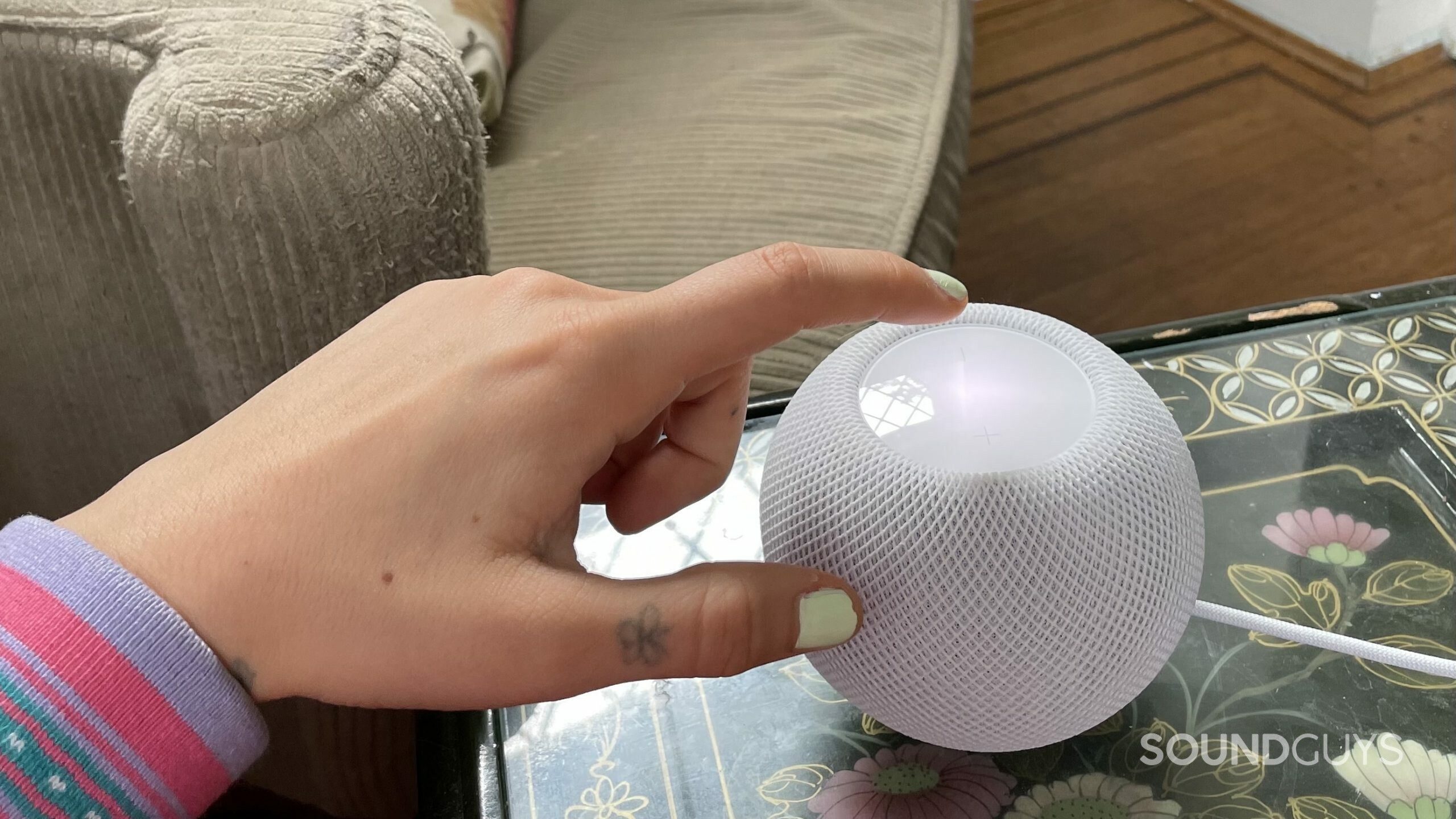
The HomePod Mini is Apple’s latest smart speaker that puts Siri in a more compact design. It should do everything that the regular-sized HomePod can do regarding smart home things like controlling smart lights and asking Siri questions. It has the Apple S5 chip inside which allows for the speaker to automatically EQ itself 180 times per second (according to Apple). When you place two speakers in the same room they will also automatically become a stereo pair which is pretty cool considering the Nest Audio requires you to go through the Google Home app.
On top of that, it can detect when your iPhone is nearby. So as you bring your phone near the speaker it will automatically bring up the appropriate controls on your iPhone.
Should you get the HomePod in 2021?
When it comes down to it, I have no problem saying that the Apple HomePod is the best sounding smart speaker I’ve heard. And yes, that includes the Google Home Max. The HomePod doesn’t have the same bass-heavy response that manufacturers tend to be leaning towards, but I personally like that. By keeping things tastefully focused on sound quality and not mass-appeal tuning, music is much clearer-sounding. The Home Max has a more “consumer friendly” sound with a bigger bass response that I think more people will enjoy, plus the Google Assistant is light years ahead of Siri.
Unfortunately, the HomePod has far too many limitations to recommend to most people. It’s actually impossible to recommend to anyone who doesn’t have at least one device in the Apple ecosystem. And unless you’re a subscriber to Apple Music or like the thought of taking some time to build a Siri Shortcut or download a separate app, it won’t work as seamlessly as you’d want it to with other services. The addition of Spotify working natively is nice, but it took forever to get that feature and for everything else you’ll have to use AirPlay which isn’t as seamless. If you’re already neck-deep in the Apple ecosystem, I’m going to guess that you’ll love using this speaker.
Apple has recently thrown in the towel by discontinuing the original HomePod. While existing inventory will continue to be sold through the company’s online store and its retail partners, Apple has announced that it will be focusing its efforts on the HomePod Mini. If you’re an Apple die-hard who’s dead set on buying an original HomePod, you better get one while you still can.
What are some alternatives?
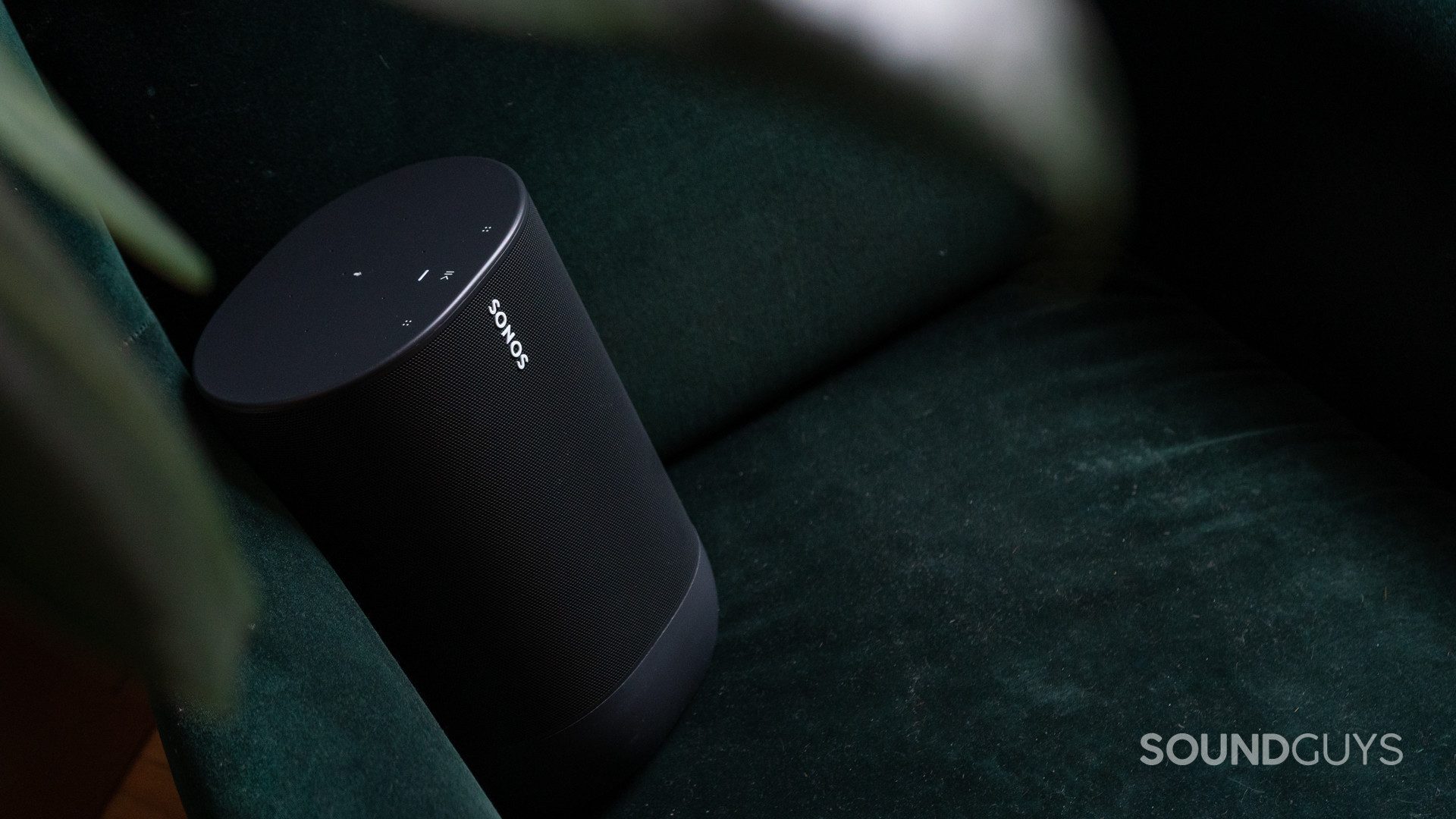
If the HomePod doesn’t do it for you then it’s still worth looking into the Google Home Max or even something like the Sonos One before you make your final choice. The Sonos One still provides good sound, has a trustworthy ecosystem backing it up, and promises support for all the major voice assistants. Then there’s also the newer Sonos Move which also has built-in Bluetooth so you can pick up the speaker and take it with you outside if you want. Of course, it doesn’t have Siri but if you use Amazon Alexa or the Google Assistant it’s definitely worth looking into. But heck, if you’re already in the Apple ecosystem: none of this matters anyway. You’re just going to buy the HomePod anyway, right?
Thank you for being part of our community. Read our Comment Policy before posting.